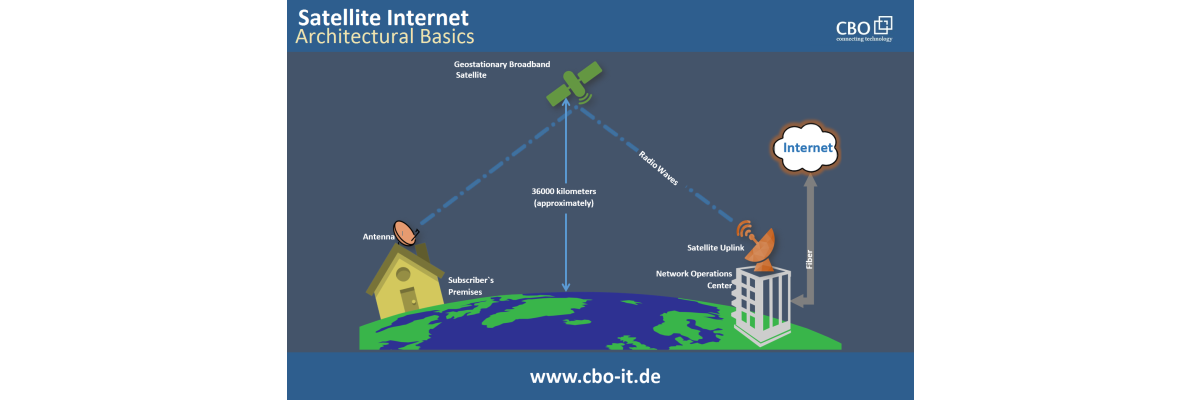We are living in an age of communications and the Internet has become a global phenomenon. Undoubtedly, interconnected optical fiber networks are driving today`s world. Luckily, new technologies and techniques have enhanced our networks and OADM (Optical add-drop Multiplexers) one such intelligent technique. In this article, we are going to discuss OADM, its types, applications, and benefits.
OADM - Introduction
An OADM (optical add-drop multiplexer) is a sophisticated networking device used in wavelength-division multiplexing (WDM) systems for routing and multiplexing various channels of light out of or into single-mode fiber (SMF). OADM provides us the capability of adding or removing one or multiple wavelength channels from an already existing multi-wavelength WDM signal. Through this device, we can route a “removed channel” to a different networking path. The diagram below is showing a pictorial representation of what we can achieve through an optical add-drop multiplexer. OADM is widely used in the construction of optical telecommunication networks and especially in short-range metro networks.
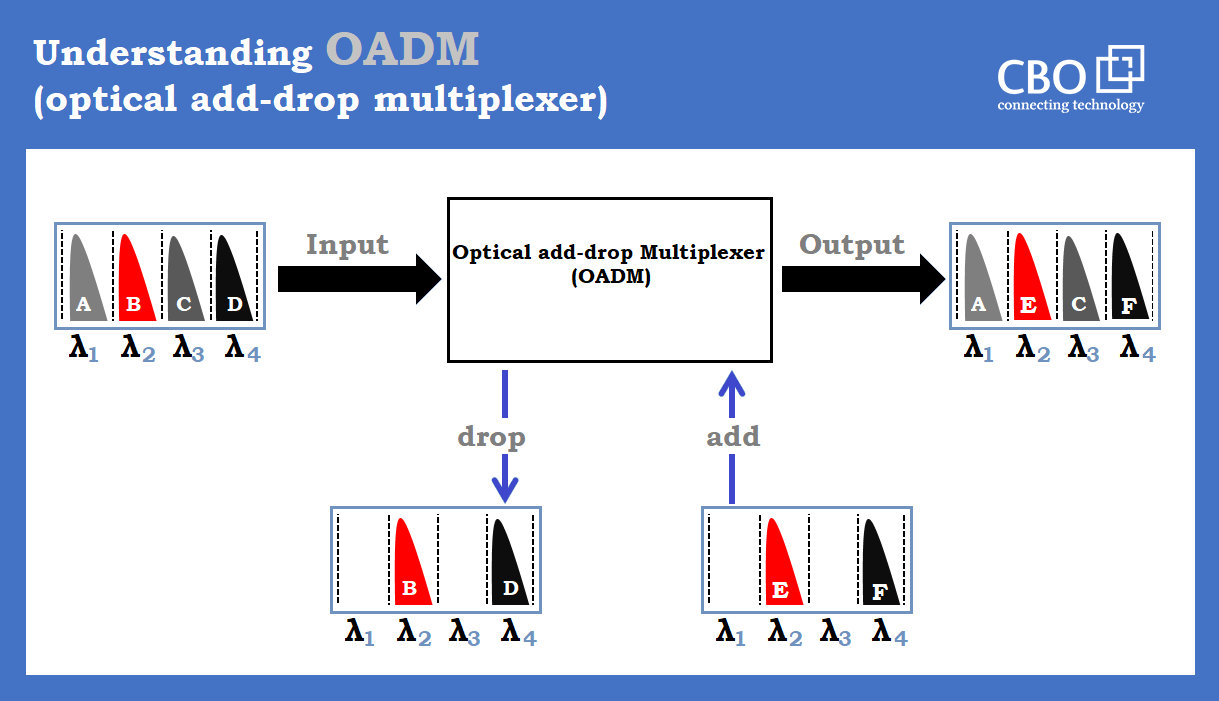
We can use an optical add-drop multiplexer device at almost any point along the optical link in a network to insert, route or remove our desired channels. Active and Passive mode are the two possible modes in which optical add-drop multiplexers can be operated.
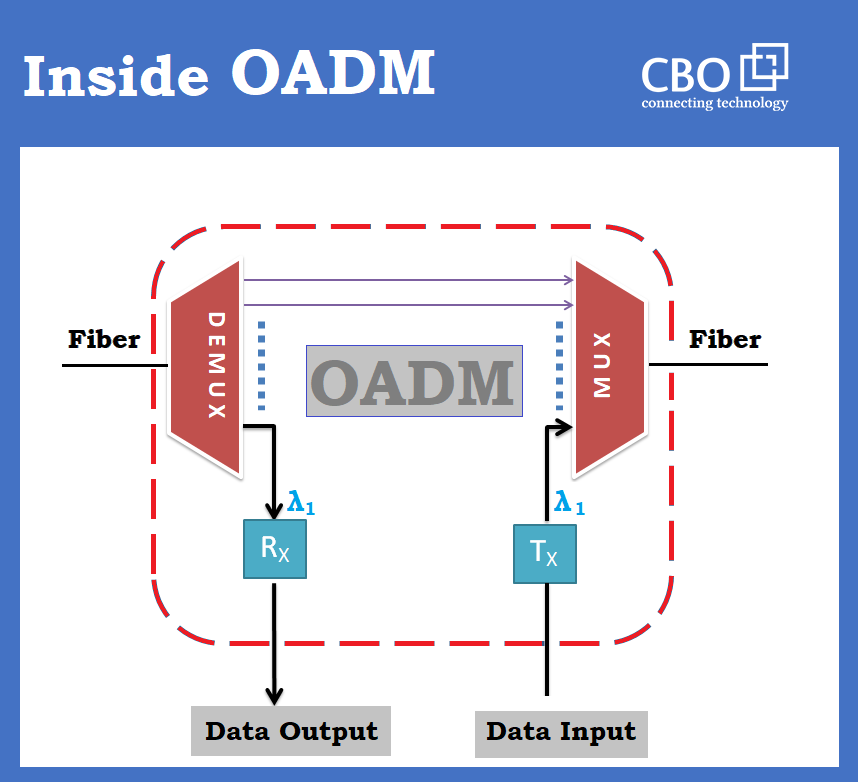
Typical Structure of OADM
A typical OADM consists of the following three components;
- an optical multiplexer
- an optical de-multiplexer
- a reconfiguration method between the two
The light paths that are dropped or added at the OADM are called dropped/added lightpaths, while all the lightpaths that pass an OADM directly are termed cut-through lightpaths. Various hardware solutions enable us to construct an OADM in several ways. We have a broad range of multiplexer and de-multiplexer technologies available including; fiber Bragg gratings with optical circulators, thin-film filters, arrayed waveguide gratings, free space spacing grating devices.
The reconfiguration or switching functions range from the fiber patch panel to various advanced switching technologies such as microelectromechanical systems (MEMS) and thermo-optic and liquid crystal switches in planar waveguide circuits.
Main Function & Working Principle of OAM
As we already know, OADM stands for “Optical Add-Drop Multiplexer”. Here, “Add” refers to the tendency of the device to add one or multiple wavelength channels to an existing WDM signal. While “Drop” refers to remove or drop one or multiple channels and routing those signals to a different network path. The ODAM selectively drops a wavelength from numerous wavelengths flowing through a fiber. It can be configured to add the same wavelength back in the data stream but with different data content. Look at the following diagram as it is replicating what happens when we implement an OADM in a network.
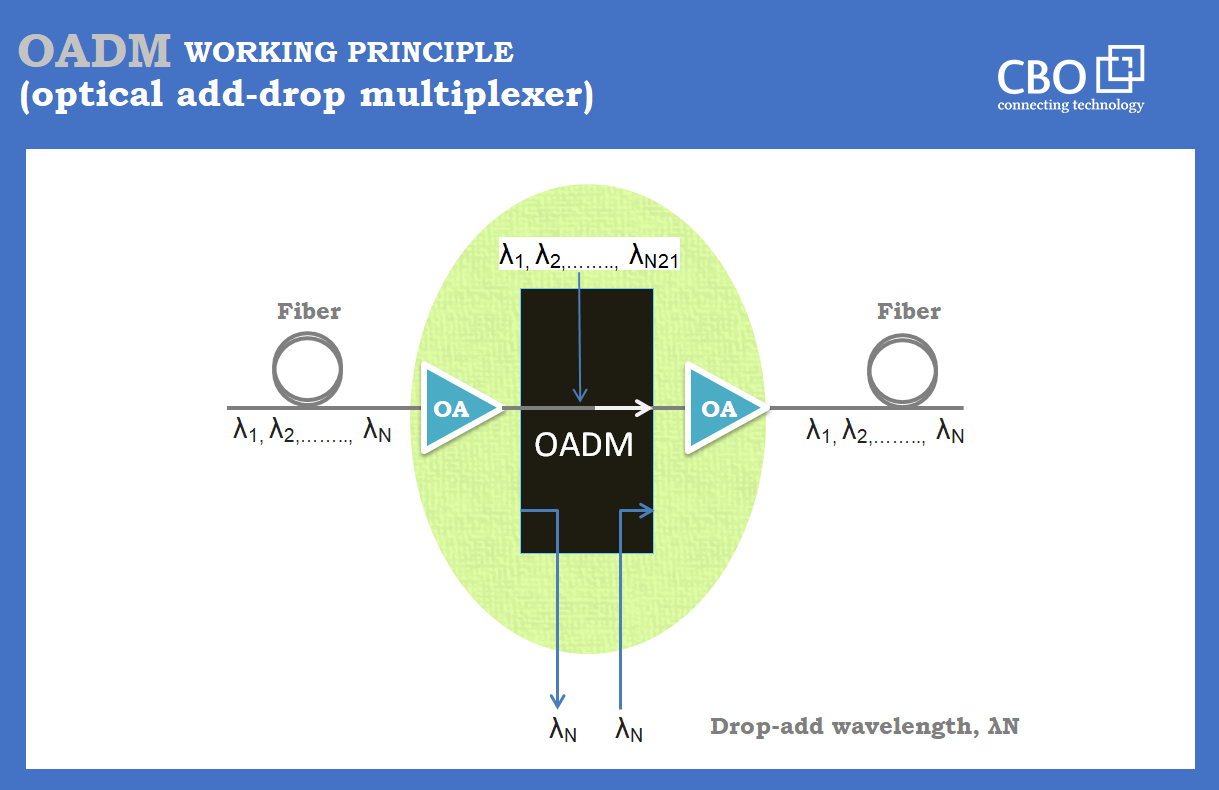
Types of OADM
Fixed Optical Add-Drop Multiplexer (FOADM) and Reconfigurable Optical Add-Drop Multiplexer) ROADM are the two types of OADM. Both the FOADM and ROADM have the same working principle and come with similar construction. However, ROADMs are a better choice for networking schemes where things keep changing.
Fixed Optical Add-Drop Multiplexers (FOADMs)
As its name suggests, FOADMs are designed to work with a fixed wavelength. These kinds of optical add-drop multiplexers incorporate a fixed filter that drops the specified wavelength while passing all other wavelengths. Fixed or passive OADM is mainly considered in networks with DWDM systems, CWDM systems or hubbed structures. In these scenarios, OADMs are connected to central hubs. In the case of FOADMs, the wavelength(s) to be added or dropped is specified at the time of installation. Thus, you won’t be able to reconfigure a FOADM without putting the service at a halt. This is where fixed optical add-drop multiplexers aren’t very good.
Reconfigurable Optical Add-Drop Multiplexer (ROADM)
ROADM is a dynamic kind of wavelength arrangement scheme. In this scheme, a wavelength selective switch (WSS) is utilized. ROADMs offer great flexibility in bypassing faulty connections, rerouting optical streams, ensuring minimal service interruption. With a reconfigurable optical add-drop multiplexer you will be able to adapt different WDM technologies as well. The ROADM scheme also permits the outputting or inputting of a single wavelength group of wavelength through the fixed port. Unlike fixed optical add-drop multiplexers ROADMs allow you online reconfiguration without affecting traffic.
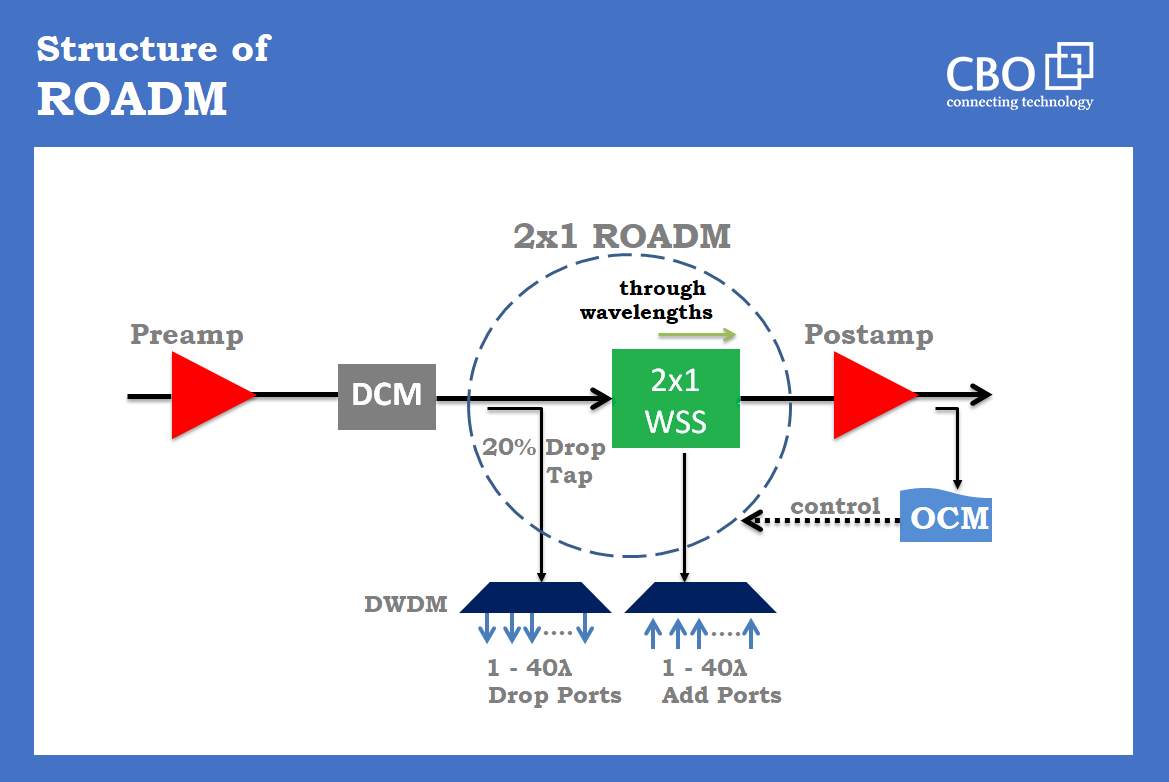
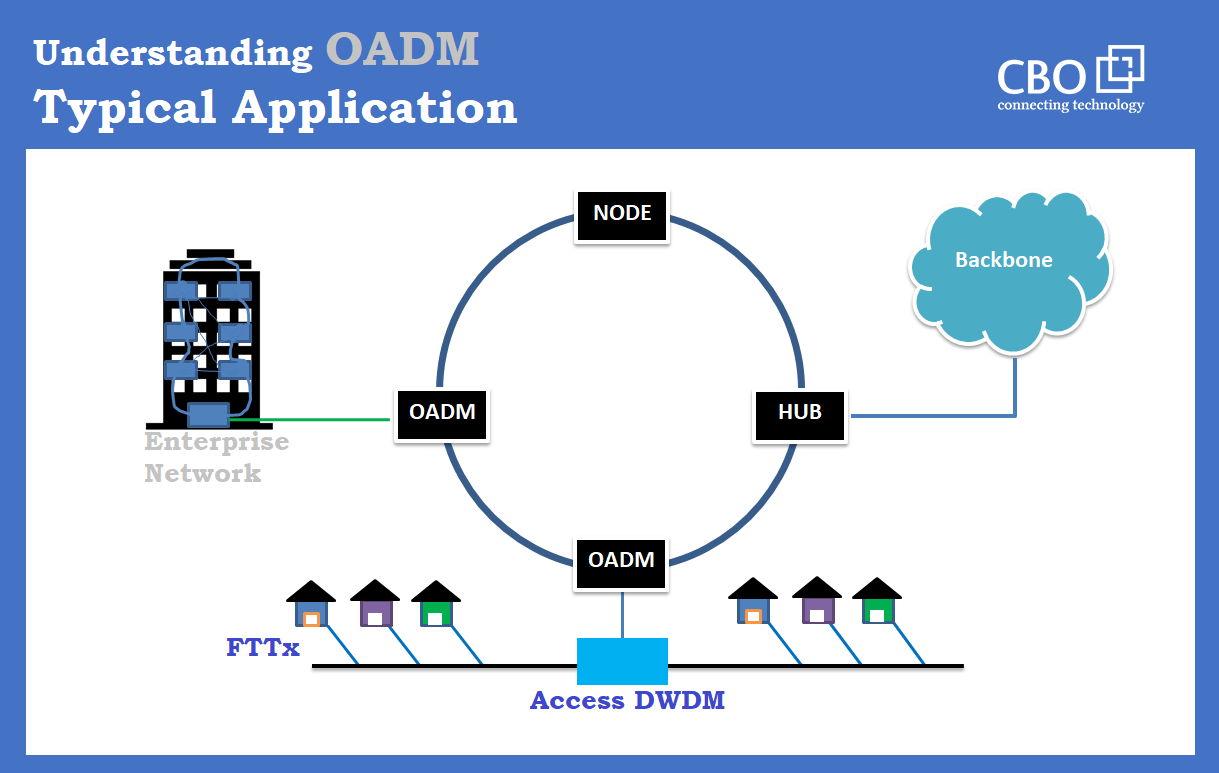
OADM – Applications
Optical add-drop multiplexers are widely used in metropolitan area networks (MANs). With OADMs, different networks we can use different optical networks at different locations. DWDM and CWDM OADM offer selective access to intermediate networks across a shared optical network path. Optical Cross Connection (OXC) is another common application of OADM. With this technique, a wider range of network interconnection can be achieved through desired or selectable wavelength resources. Following are a few types of services for which OADM is widely considered;
- SCADA Control & Alarms
- Networking
- SD/HD Video
- Pro Audio
- Telecom
Conclusion:
OADM has become a vital element of optical fiber networks. It can be deployed for short metro networks or long-haul core networks. Reconfigurable OADM (ROADM) and Fixed OADM (FOADM) are the two most widely used schemes of OADM. Optical add-drop multiplexers are a great way of reducing overall networking costs.
 English
English
 Deutsch
Deutsch
 Espaniol
Espaniol









